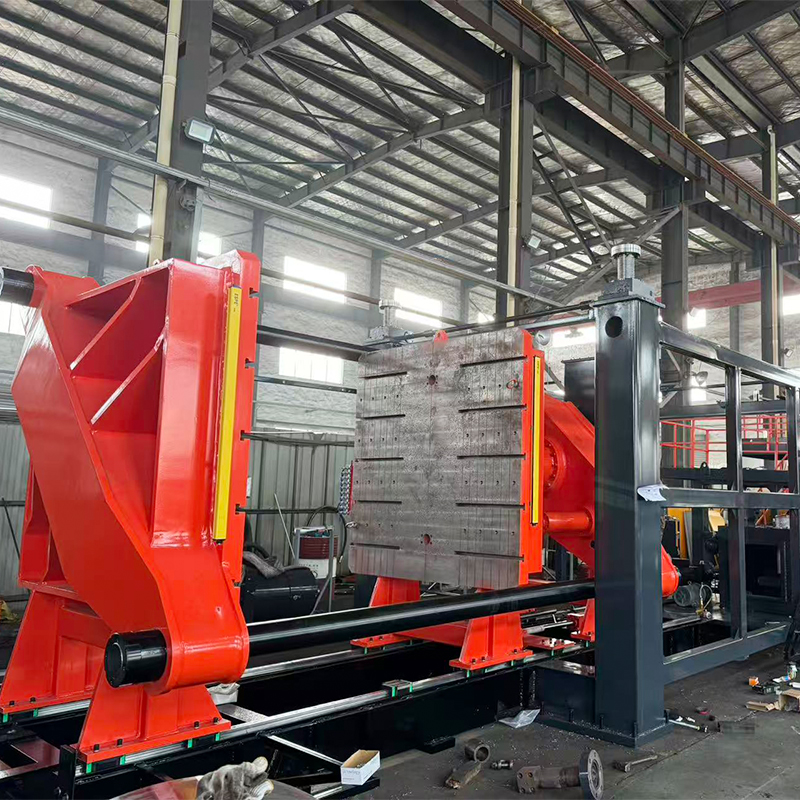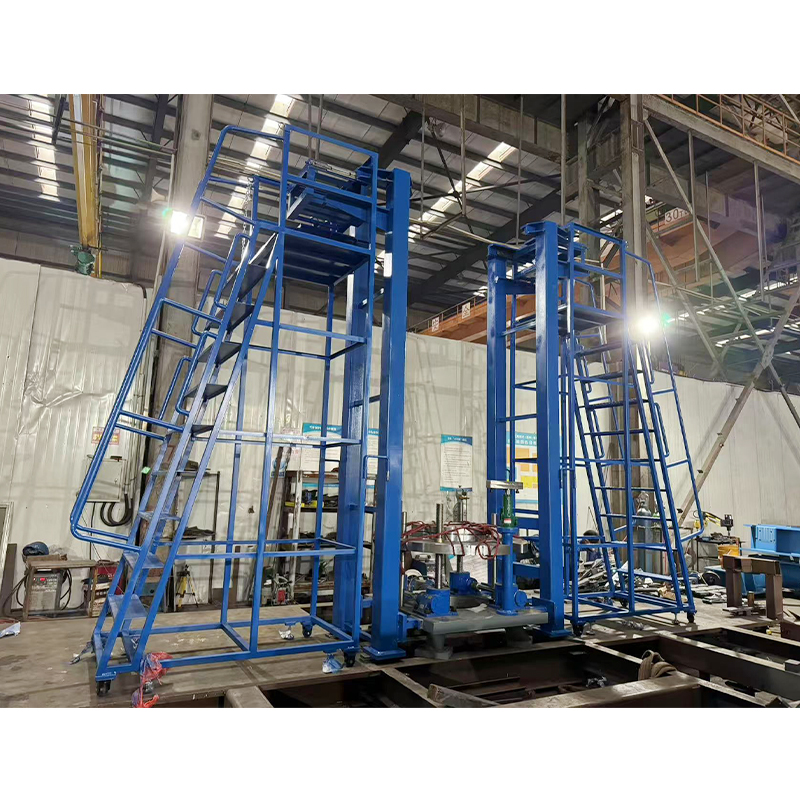Does the blow molding machine have a stable extrusion system?
Release Time : 2025-10-08
In the production of hollow plastic products, the blow molding machine is the core equipment that transforms raw materials into finished products. Its performance directly determines product quality, consistency, and production efficiency. The extrusion system plays a crucial role in every step of the blow molding process—it is responsible for heating, melting, homogenizing, and continuously and stably extruding solid plastic pellets into tubular parisons, providing the foundation for subsequent mold closing, inflation, and cooling to finalize the shape. Therefore, whether a blow molding machine has a stable extrusion system is the primary criterion for evaluating its overall performance. An unstable extrusion process, even the most precise in subsequent steps, will not be able to compensate for defects such as uneven parison thickness, melt fracture, or fluctuations.
A stable extrusion system is primarily reflected in its ability to uniformly plasticize the plastic melt. After entering the barrel, the plastic pellets undergo a combination of external heat transfer from the heating coil and shear heat generated by the screw's rotation, gradually transforming from a solid state to a uniform, viscous flow. Uneven heating or improper screw design can cause some parts of the material to overheat and degrade, while others remain incompletely melted, resulting in "unmelted particles" or "gel points." These defects can directly affect the surface quality of the parison during extrusion and even create localized weaknesses during inflation, leading to cracking or insufficient strength in the finished product. High-quality extrusion systems utilize segmented temperature control and optimized screw aspect ratios and compression ratios to ensure sufficient and uniform plasticization of the material in both the axial and radial directions, delivering a stable and consistent melt output.
Extrusion stability is also reflected in flow rate consistency. In continuous production, the length and wall thickness of each extruded parison must be highly consistent. Otherwise, misalignment, material pinching, and uneven inflation can occur during mold closing. Especially at high-speed production, even small fluctuations in flow rate can be amplified, resulting in product weight deviations or failure to control wall thickness. Advanced extrusion systems are equipped with high-precision drives and closed-loop control systems. These systems monitor screw speed, melt pressure, and temperature in real time, automatically fine-tuning these parameters based on feedback to offset the effects of raw material batch variations, ambient temperature fluctuations, and equipment wear, ensuring that the output remains within the ideal range every second.
The precision of the screw and barrel fit is also crucial to extrusion stability. Maintaining an appropriate gap between the two ensures smooth melt flow while preventing increased backflow and pressure loss caused by excessive clearance. Over long-term operation, the screw and barrel gradually wear due to friction with the material. Insufficient material hardness or poor structural design accelerates wear, impacting extrusion efficiency and melt quality. High-quality blow molding machines utilize wear-resistant alloy coatings or bimetallic barrels, significantly extending the life of core components and ensuring stable extrusion performance over extended periods of operation.
A stable extrusion system also requires excellent self-cleaning capabilities and adaptability to material changes. When changing colors or raw materials, the system should be able to quickly remove residual material, minimizing the generation of excess material and reducing waste. Screw design typically prioritizes smooth flow paths and no dead zones to avoid melt stagnation and thermal decomposition, ensuring rapid and stable production after each switchover.
From a production management perspective, the stability of the extrusion system is directly related to product yield, material utilization, and equipment efficiency. Frequent parameter adjustments, increased scrap, or downtime for maintenance all increase operating costs. A reliable extrusion system, on the other hand, enables long periods of unattended continuous operation, reducing manual intervention and improving automation.
In summary, a blow molding machine's stable extrusion system determines its ability to produce high-quality and efficient hollow parts. It is not merely a combination of mechanical structure but also an integrated embody of materials science, thermodynamics, and automatic control technology. Choosing a blow molding machine with stable extrusion performance lays a solid foundation for every plastic product, ensuring that every extrusion is precise and reliable.
A stable extrusion system is primarily reflected in its ability to uniformly plasticize the plastic melt. After entering the barrel, the plastic pellets undergo a combination of external heat transfer from the heating coil and shear heat generated by the screw's rotation, gradually transforming from a solid state to a uniform, viscous flow. Uneven heating or improper screw design can cause some parts of the material to overheat and degrade, while others remain incompletely melted, resulting in "unmelted particles" or "gel points." These defects can directly affect the surface quality of the parison during extrusion and even create localized weaknesses during inflation, leading to cracking or insufficient strength in the finished product. High-quality extrusion systems utilize segmented temperature control and optimized screw aspect ratios and compression ratios to ensure sufficient and uniform plasticization of the material in both the axial and radial directions, delivering a stable and consistent melt output.
Extrusion stability is also reflected in flow rate consistency. In continuous production, the length and wall thickness of each extruded parison must be highly consistent. Otherwise, misalignment, material pinching, and uneven inflation can occur during mold closing. Especially at high-speed production, even small fluctuations in flow rate can be amplified, resulting in product weight deviations or failure to control wall thickness. Advanced extrusion systems are equipped with high-precision drives and closed-loop control systems. These systems monitor screw speed, melt pressure, and temperature in real time, automatically fine-tuning these parameters based on feedback to offset the effects of raw material batch variations, ambient temperature fluctuations, and equipment wear, ensuring that the output remains within the ideal range every second.
The precision of the screw and barrel fit is also crucial to extrusion stability. Maintaining an appropriate gap between the two ensures smooth melt flow while preventing increased backflow and pressure loss caused by excessive clearance. Over long-term operation, the screw and barrel gradually wear due to friction with the material. Insufficient material hardness or poor structural design accelerates wear, impacting extrusion efficiency and melt quality. High-quality blow molding machines utilize wear-resistant alloy coatings or bimetallic barrels, significantly extending the life of core components and ensuring stable extrusion performance over extended periods of operation.
A stable extrusion system also requires excellent self-cleaning capabilities and adaptability to material changes. When changing colors or raw materials, the system should be able to quickly remove residual material, minimizing the generation of excess material and reducing waste. Screw design typically prioritizes smooth flow paths and no dead zones to avoid melt stagnation and thermal decomposition, ensuring rapid and stable production after each switchover.
From a production management perspective, the stability of the extrusion system is directly related to product yield, material utilization, and equipment efficiency. Frequent parameter adjustments, increased scrap, or downtime for maintenance all increase operating costs. A reliable extrusion system, on the other hand, enables long periods of unattended continuous operation, reducing manual intervention and improving automation.
In summary, a blow molding machine's stable extrusion system determines its ability to produce high-quality and efficient hollow parts. It is not merely a combination of mechanical structure but also an integrated embody of materials science, thermodynamics, and automatic control technology. Choosing a blow molding machine with stable extrusion performance lays a solid foundation for every plastic product, ensuring that every extrusion is precise and reliable.







